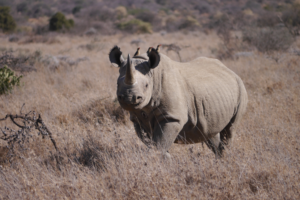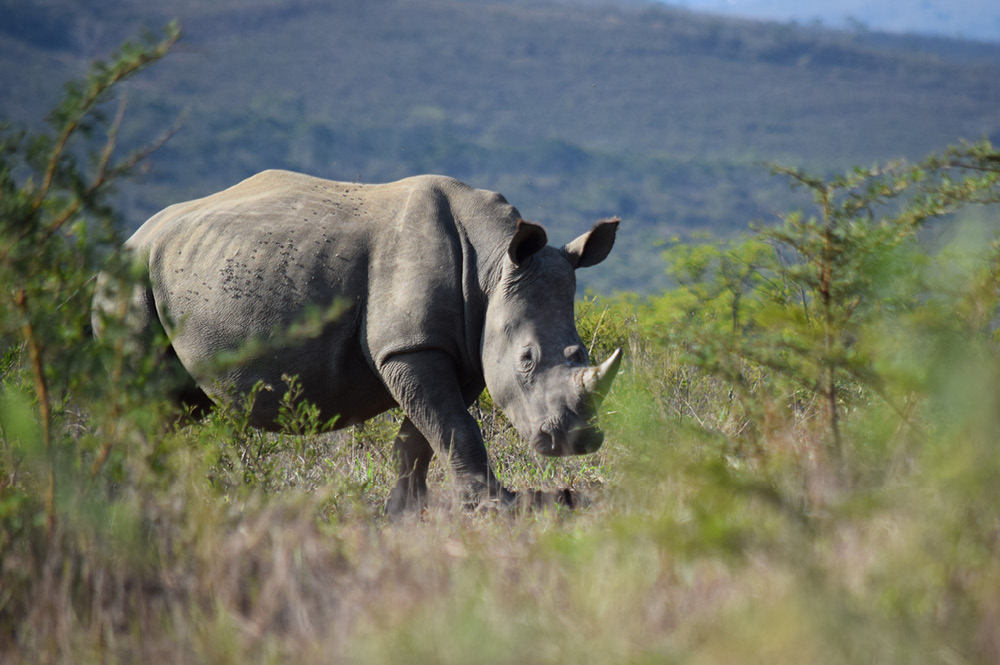Keeping the rhino ‘factory’ breeding as fast as possible is the key to success and has largely provided us the buffer to weather the poaching blitz thus far. I would like to give you a whistle-stop tour of rhino conservation and the storms that are boiling over the horizon, from poaching to Covid-19.
Successful rhino conservation is dependent upon a number of key issues. Foremost, we need to provide suitable and large habitats within a species’ historic range to support large populations of free-ranging rhinos that breed entirely on their own terms.
Populations should be numbered in their hundreds, and ideally in their thousands, to really have conservation impact at scale. Good habitat is essential to provide the required food and nutrients: the better it is, the higher the densities of rhinos one can support.
The costs of securing our reserves has pushed the conservation model to focus on smaller, more manageable reserves. That does not mean forgetting the large parks—no, never. Good law enforcement goes hand-in-hand with efficient and effective management.
This must be supported by good intelligence to stop poachers before they get near our reserves. To do this, there must be good local and, ideally, regional cooperation with other law-enforcement agencies (Police, Customs etc.) to share intelligence. Unfortunately, this is where the law enforcement domain can be undermined by corruption and/or inefficiencies in the system. Having political will and support for conservation (and rhinos) is critical to its success. It can lead to a robust whole-government approach to addressing threats from poaching and organised wildlife crime.
Keeping rhino breeding optimally requires focused attention.
To do this, it is vital to maintain populations at productive sizes, because breeding rate declines if a population is at maximum carrying capacity. If a population is breeding well, surplus rhinos can be moved to other areas to establish new populations. This practice is crucial, as it spreads eggs into multiple baskets, places rhinos in safer areas, and spreads the burden of security.
Financial sustainability is essential for protected area management and rhino conservation efforts. Tourism and sustainable use (especially in southern Africa) have provided the funds for conservation in the state and private sectors. However, the huge and escalating costs (in financial and social terms) of protecting rhinos is driving many private land-owners, who receive little-to-no financial assistance from the state, to relinquish their rhino populations, in turn leading to a loss of rhino homes and habitat.
Then comes Covid-19!
Restrictions on international travel has seen a crash in the long-haul tourism market and conservation hunting that has been the cash-cow for many African range states. Namibia’s nature-based tourism accounts for 14.7% of the national GDP and 15.4% employment, while up to 21% of Kenya’s national income is derived from tourism. Covid-19 has seen this all but disappear, pushing many tourism operations to close, unemployment to rise, conservation organisations to the brink of failure and communities to be sceptical about the value of wildlife as a viable form of land-use.
South African National Parks, a model conservation organisation that prided itself on generating 80% of its own budget through tourism, is now dependent upon a cash injection from the state to survive.
So how do we respond?
Donor injections, with limited local government support, have helped plug some holes. This is not a sustainable long-term option as we ideally want these conservation initiatives to be financially self-sufficient (or as close as possible). Covid-19 has exposed how fickle the current nature-based tourism model is.
There has to be more introspection by the conservation authorities and private sector, looking to innovative means of diversifying income streams to provide greater social and economic resilience to these financial knocks. We want communities (as well as the private sector and governments) to see Africa’s unique wildlife resources as an asset and not a cost. I see the need to diversify the local tourism market, explore more adventure tourism, include agricultural possibilities and expand sustainable-use options. If general conservation wins, so will our rhino conservation initiatives, although I fear at a somewhat lower level. Tough times lie ahead.
A version of this article was originally printed in our annual supporter magazine, The Horn.
Dr Mike Knight is the Chair of the IUCN SSC African Rhino Specialist Group.








